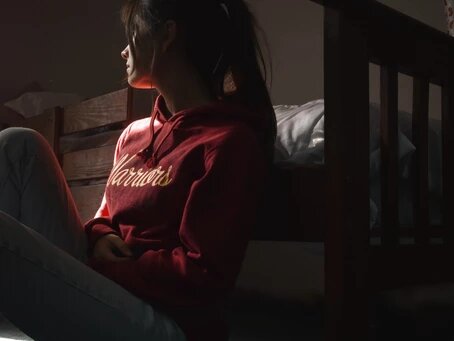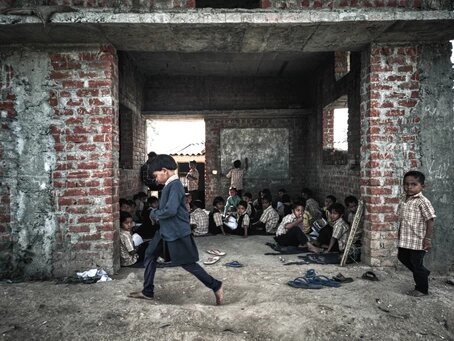Children can be directed and moulded in different ways and that is what makes them the most vulnerable part of our society. To protect the children from the ills of our society and uphold their safety and happiness, our Constitution comprises of several rights of children.
The Indian Constitution envelops many rights to ensure the safety and better future of children which includes-
· Right to free and compulsory education for all children in the 6-14 age group. (Article 21) According to the 86th amendment to the constitutional right to education was made a fundamental right. All children irrespective of colour, caste or creed should be provided education.
· Right to be protected from any hazardous employment till the age of 14 years. (Article 24)
· Right to be protected from being abused and forced by economic necessity to enter occupations unsuited to their age or strength.(Article 39 (e))
· Right to equal opportunities and facilities to develop in a healthy manner and in conditions of freedom and dignity and guaranteed protection of childhood and youth against exploitation and against moral and material abandonment (Article 39 (f))
· Right to early childhood care and education to all children until they complete the age of six years (Article 45)
Children in India also enjoy the equal rights guaranteed by the Constitution of India just like every other citizen which includes
· Right to equality (Article 14)
· Right against discrimination (Article 15)
· Right to personal liberty and due process of law (Article 21)
· Right to being protected from being trafficked and forced into bonded labour (Article 23)
· Right of minorities for the protection of their interests (Article 29)
· Right of weaker sections of the people to be protected from social injustice and all forms of exploitation (Article 46)
· Right to nutrition and standard of living and improved public health (Article 47)
India became one of the signatories of the United Nations Convention on Rights of Child (UNCRC) in 1992 and since then it has been working towards a better future for the children. Even though several rights are in place to protect the children, the reality of their protection can be quite distressing. Despite so many efforts, many children are still exploited by being forced into child marriage, child labour, trafficking, sexual exploitation etc.
India has the highest number of child bride in the world. Over 47% of the girls are usually married before the age of 18. The central reason behind this is poverty, parents marry off their daughters so that there is one less mouth to feed and at times sell them for money and also due to safety concerns in slum areas. In many states in India, boys are also forced into child marriages though the statistics are not as alarming as the girls of the same age. According to the Prohibition of the Child Marriage Act, a girl cannot marry before the age of 18 but this law is often overlooked because ‘parents are forced to do this due to certain circumstances’.
According to a Campaign Against Child Labor (CAC) study, India has 1,26,66,377 child labourers. Due to poverty and other reasons, most parents force their children into child labour from a very young age. These children are unable to get an education and the cruelties they suffer in the outside world are inexpressible. An account published in The Hindu of a kid rescued from the chains of child labour says,
“I had to endure violence after my parents sent me off to work as a domestic worker in Bengaluru at the age of 10. I used to work from 6 a.m. till 11 p.m., and my parents never came to meet me. Moreover, the money would be sent to my parents directly and I wouldn’t get anything. I missed the most important part of my childhood.”
Even though the number of child labourers decreased by 65% – from 1.26 crore to 82.2 lakh between Census 2001 to and Census 2011, it is still quite prominent in states like UP, Rajasthan etc. There have been effective schemes to fight Child labour, for example, The 2014 National Child Labor Project (NCLP) scheme, enforced in 1988 in areas of high concentration of child labour sees children (9-14 years) rescued from hazardous occupations and given enrolment in NCLP training centres. These centres offer bridge education, vocational training, mid-day meal, stipend, healthcare services – all as a precursor to mainstream formal education. The scheme was rolled out in 24 districts in Odisha. These statistics will definitely also be affected by the economic depression caused by the pandemic in the years to come.
India has a very high rate of child trafficking so much so that at every 8 minute a child disappears in India as per the reports of National Crimes Record Bureau. These children are trafficked for various reasons such as labour, begging, sexual exploitation, organ trade, drug peddling etc. Kids being vulnerable are easier to push into such things. Due to the nature of the crime and poor enforcement of laws, it’s hard to track and prevent such crimes. Many at times the kidnapped kids are sent to different countries such as Bangladesh, Nepal etc.
According to a report by the National Human Rights Commission of India, 40,000 children are abducted each year, leaving 11,000 untraced. There are an estimated 300,000 child beggars in India. In 2014, 76% of all people trafficked in India were women and girls. The Indian Government estimates that girls make up the majority of children in sex trafficking. According to the CBI (Central Bureau of Investigation) reports from 2009, there are an estimated 1.2 million children involved in prostitution in India. Only 10% of human trafficking in India is international, while 90% is interstate.
While these figures are shocking, they expose us to the harsh reality of the world we live in. The need for better implementation of the laws needs to be given serious consideration. The journey to a safe future starts with the protection of the citizens of tomorrow by shaping their today and for this purpose, grass-root structural changes need to be done.
References
“Campaign Against Child Labour.” The Hindu, 13 June 2019, www.thehindu.com/news/cities/bangalore/campaign-against-child-labour/article27892744.ece.
“Child Trafficking in India.” Wikipedia, Wikimedia Foundation, 23 Aug. 2020, en.wikipedia.org/wiki/Child_trafficking_in_India.
“Constitution of India: HAQ : Centre for Child Rights.” HAQ, www.haqcrc.org/child-rights/constitution-of-india/.
Indian Laws & Policies: HAQ : Centre for Child Rights. www.haqcrc.org/child-rights/indian-laws-policies/.
Save the Children India. “5 Shocking Facts and Figures about Child Marriage in India.” Save the Children India, Save the Children India, 2 July 2017, www.savethechildren.in/resource-centre/articles/5-shocking-facts-and-figures-about-child-marriage.
Save the Children India. “Statistics of Child Labour in India State Wise.” Save the Children India, Save the Children India, 9 Sept. 2016, www.savethechildren.in/articles/statistics-of-child-labour-in-india-state-wise.




